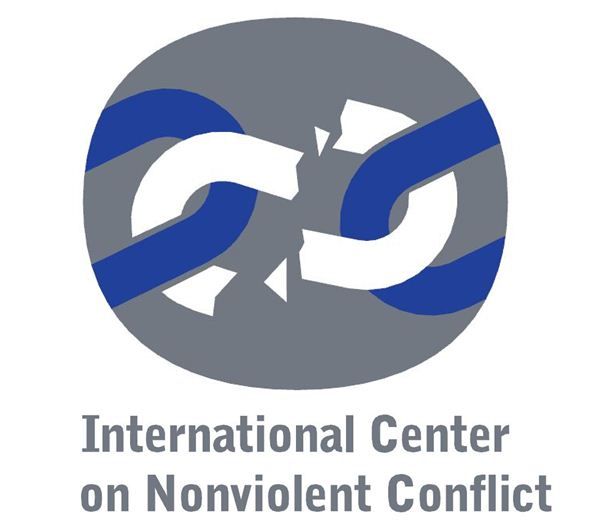You are here
Gene Sharp
Year of Publication: 2012
Offers a set of definitions of the range of terms associated with (and relevant to) nonviolent action and mass unarmed resistance. Includes a brief introductory essay on power, and short summaries of the civil resistance in Serbia 2000 and Tunisia 2011.
Year of Publication: 2011
Also published by London, Serpent’s Tail, 2012, and available from the Albert Einstein Institution (see website).
Written at the request of a Burmese dissident, this is now widely known as a succinct analysis of how nonviolent resistance can overthrow tyrannical regimes.
Year of Publication: 2005
An abbreviated and slightly modified version of Sharp’s general argument in The Politics of Nonviolent Action. Includes 23 brief case studies of campaigns from the Russian Revolution of 1905 to the Serbian people power of 2000 (some written by Sharp’s collaborators: Joshua Paulson, Christopher A. Miller and Hardy Merriman).
Year of Publication: 2003
Summary analysis of potential for popular nonviolent resistance to defeat coup attempts, recommendations for organised strategy and advance preparations to prevents coups, and with very brief description of resistance to Kapp Putsch in 1920, the Algerian Generals in 1961 and to attempt to overthrow Gorbachev in 1991.
Year of Publication: 1997
An exhaustive, annotated, bibliography, very strong on earlier history of nonviolent action, but also including many recent nonviolent campaigns up to the mid-1990s. Part I covers cases of nonviolent action. Part II the methods and dynamics of nonviolent action and theories of conflict, power and violence. NB the index is seriously flawed (a correct version should be available on the Albert Einstein Institution website), but it is possible to trace campaigns through the list of contents.
Year of Publication: 1990
Examines theoretical case for relying on the power of society to deter and defend, rather than weaponry, cites examples of Ruhr 1923 and Czechoslovakia 1968-69 as examples of improvised civilian defence, and explores strategy and possibility of ‘transarmament’. Sharp’s 72-page Self-reliant Defense Without Bankruptcy or War, 1992, written for Soviet successor states (especially the Baltic states) can be downloaded from http://aeinstein.org.
Year of Publication: 1989
See in same journal: , Gene Sharp: Nonviolent struggle Journal of Palestine Studies, 1987, pp. 37-55 .
Year of Publication: 1987
Year of Publication: 1981
Introductory essay by Randle on training and another by Sharp on civilian-based defence.
Year of Publication: 1980
Sharp, whose 1973 three volume The Politics of Nonviolent Action is now a standard reference work on the theory and strategy of civil resistance has here brought together a collection of writings from over 20 years to address key themes relating to social power and popular empowerment. Other topics covered include several essays on civilian-based defence, reflections on the anti-apartheid struggle in South Africa (written as a series of articles in 1963), civil disobedience in a democracy, and review essays of Hannah Arendt's Eichmann in Jerusalem, and On Revolution.
Year of Publication: 1973
Part 1 of this now classic analysis explores political and sociological theories underlying nonviolent resistance, including Sharp’s much-debated consent theory of power. Part 2 (‘Methods’) and Part 3 (‘Dynamics’) are noted below ( Sharp, The Politics of Nonviolent Action (A. 1.b. Strategic Theory, Dynamics, Methods and Movements) ).
Part 1 of this now classic analysis explores the political and sociological theories underlying nonviolent resistance to develop a 'consent theory of power'; this has since been much debated. Part 1 also discusses nonviolent action as an 'active technique of struggle' and contextualizes Gandhi's contribution within a much wider historical context of major resistance movements dating from the later 18th century to 1968. Part 2 categorises and illustrates the now famous list of 198 methods, while the longest volume, Part 3, elaborates Sharp’s strategic approach.
Year of Publication: 1960
Main focus on 1930-31 independence campaign, but also covers peasant struggle in Chamaparan 1917-18, and Gandhi’s 1948 fast in Delhi against inter-communal killings linked to partition.
A Guide to Civil Resistance
Volume One
Volume Two
 The online version of Vol. 1 of the bibliography was made possible due to the generous support of the International Center on Nonviolent Conflict (ICNC). ICNC is an independent, non-profit educational foundation that develops and encourages the study and use of civilian-based, nonmilitary strategies aimed at establishing and defending human rights, democratic self-rule and justice worldwide.
The online version of Vol. 1 of the bibliography was made possible due to the generous support of the International Center on Nonviolent Conflict (ICNC). ICNC is an independent, non-profit educational foundation that develops and encourages the study and use of civilian-based, nonmilitary strategies aimed at establishing and defending human rights, democratic self-rule and justice worldwide.
For more information about ICNC, please see their website.
 The online version of Vol. 2 of the bibliography was made possible due to the generous support of The Network for Social Change. The Network for Social Change is a group of individuals providing funding for progressive social change, particularly in the areas of justice, peace and the environment.
The online version of Vol. 2 of the bibliography was made possible due to the generous support of The Network for Social Change. The Network for Social Change is a group of individuals providing funding for progressive social change, particularly in the areas of justice, peace and the environment.
For more information about The Network for Social Change, please visit their website.










 esistance.info
esistance.info

